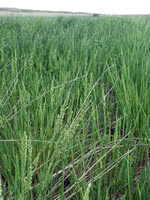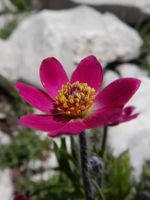Mon-Fri 9am - 5pm Mountain time
Slough Grass vs Cutleaf Anemone
Beckmannia syzigachne
Anemone multifida
CUSTOM GROW
NOT AVAILABLE THIS SEASON - MIGHT RETURN
Slough Grass is a hardy grass that will happily grow in any wet soil. It is usually found near water and is common haymaking material or forage.
Slough Grass is also useful for erosion control and land reclamation.
Pacific Anemone is a native perennial wildflower with buttercup-like blooms. The flowers can be a variety of colors, including white, pink, and dark red. The deeply cut leaves add a unique texture to the landscape. The flowers bloom from May to August, providing early-season nectar and pollen for insects. They attract a variety of pollinators, including bees and butterflies.
As the flowers fade, they become fluffy white seed heads, which birds often use in their nests. They can spread readily through self-seeding; to limit their spread, regular deadheading is recommended. Tolerant of drought and poor soils, the Pacific Anemone is well suited for wildflower gardens, pollinator gardens, and naturalization projects.

